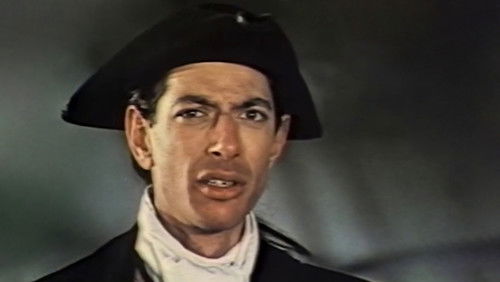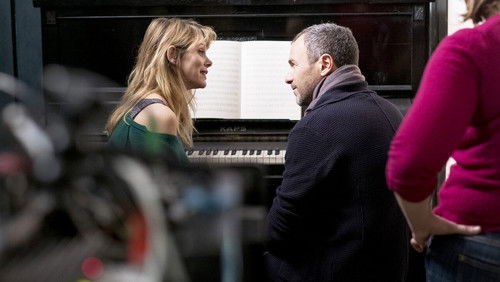La Danza de la Realidad (2013)
41KLa Danza de la Realidad: Directed by Alejandro Jodorowsky. With Brontis Jodorowsky, Pamela Flores, Jeremias Herskovits, Alejandro Jodorowsky. In a Chilean little town, the son of an uprooted couple, formed by a rigorous communist father and a loving but weak mother, tries to pave his own path in a society that does not understand their Jewish-Ukrainian origins.
“Anyone interested in cult movies must have heard of Chilean artist Alejandro Jodorowsky – even if, during his 57 year association with the cinema so far, he has only delivered two shorts and seven feature films. With my open-air viewing of his latest effort, I have now watched all of them having just caught up with the quirky LA CRAVATE (1957), the irritating TEATRO SIN FIN (1965), the exotic adventure TUSK (1980) and even the engrossing feature-length documentary JODOROWSKYu0026#39;S DUNE (2013). As things stand now, I can divide Jodorowoskyu0026#39;s filmography into three symmetrical groups: admirable (EL TOPO {1970}, SANTA SANGRE {1989} and, happily, THE DANCE OF REALITY), enjoyable (LA CRAVATE, TUSK, THE RAINBOW THIEF {1990}) and loathsome (TEATRO SIN FIN, FANDO AND LIS {1968}, THE HOLY MOUNTAIN {1973}) u003cbr/u003eu003cbr/u003eIt is not an unknown occurrence in movies that a respected artist takes an inordinately long hiatus from the medium: David Lean, Sergio Leone and Stanley Kubrick are perhaps the most egregious examples but Jodorowskyu0026#39;s 23 years is probably the lengthiest sabbatical yet! Although he had been threatening to make a sequel to EL TOPO for the last decade – his screenplay of THE SONS OF EL TOPO was even glimpsed sitting on the manu0026#39;s shelves in the aforementioned u0026quot;Duneu0026quot; documentary! – it is perhaps unsurprising that it took the now-85-year-old Jodorowskyu0026#39;s most personal project, an adaptation of his own autobiography, to lure him back to the cinema (even if that only came about as a result of a reteaming with his DUNE producer Michel Seydoux). Equally plausible is the fact that, for a man with such a long and varied career, one film would not be enough to tell his whole life-story and, as his young son Adan said in the Qu0026amp;A which followed the filmu0026#39;s screening, Alejandro is currently working on the second installment! I, for one, am looking forward to it u003cbr/u003eu003cbr/u003eIn keeping with the autobiographical nature of the film, his oldest son Brontis (who played the child in EL TOPO) has the lead role here of Jodorowskyu0026#39;s strict businessman father, Cristobal plays a Buddhist mystic who runs around practically naked, Adan plays a long-haired, bespectacled anarchist and Alejandro himself appears as the ruminating guardian angel of his put-upon younger self! Although I would be the first one to admit that I much prefer the Luis Buñuel brand of Surrealism rather than the self-indulgent obscurantist style propagated by the likes of Federico Fellini, Fernando Arrabal (Jodorowskyu0026#39;s own partner in his u0026quot;Panicu0026quot; movement days) and David Lynch (the director who ultimately brought DUNE to the big-screen, albeit disastrously, in 1984!), I have to say that sitting through the not unsubstantial 130-minute duration of THE DANCE OF REALITY made me realize that even Jodorowskyu0026#39;s most outreu0026#39; ideas in his previous films might well have had their seeds in his troubled childhood in the desert Chilean village of Tocopilla.u003cbr/u003eu003cbr/u003eThe film can be roughly divided into three segments: the first part concentrates on the boyu0026#39;s physical and mental abuse at the hands of his Ukranian-Jewish father (including vignettes involving red shoes and the fire brigade); the second on the fatheru0026#39;s ineffectual political activities (including an amusing failed assassination attempt at a best-dressed dog contest and a lengthy episode as the Chilean dictatoru0026#39;s horse groomer); and, finally, the prodigal fatheru0026#39;s return homeward (after suffering from a bout of amnesia following much torture at the hands of the tyrannical regime). The father (incidentally, Brontisu0026#39; appearance here turns him into a virtual dead ringer for Hollywood actor Peter Sarsgaard!) had been a circus performer and is portrayed as a staunch atheistic Communist, the mother only communicates in operatic arias and the young boy is seen sporting a blonde wig at the latteru0026#39;s insistence (in emulation of her own fatheru0026#39;s mane) and the formeru0026#39;s chagrin. While berating his son for looking effeminate and mingling with the local mystics and mutilated soldiers-turned-paupers, Jodorowsky Sr. is shown consorting with whores, transvestites and political subversives in his weekly night-time trysts to the local tavern.u003cbr/u003eu003cbr/u003eAs can be gleaned from a cursory glance at the storyline and as was to be expected from this director, despite the reflective and occasionally even pastoral mood that permeates the proceedings, the film cannot fail but include a surfeit of full-frontal nudity which result in a couple of strong scenes: both father and mother get to shed their clothes but, instead of using it during scenes of sexual activity, the elder Jodorowsky shows his father being humiliated and tortured, himself as a young boy being comforted by his stark-naked, big-breasted mum and the latter miraculously healing her leprosy–stricken husband by urinating on him!! In such a godless environment (where religious relics are dumped into the toilet bowl), even horses can become objects of desire as the Chilean leader is depicted metaphorically having a virtual orgasm while astride his white-maned Bucephalus and, consequently, it is the latter who gets poisoned instead of its owner who is in turn devastated by the loss! The directoru0026#39;s typically skewed sense of humour, then, is evident in the recurring presence of a midget barker, forever donning outlandish costumes, in an attempt to draw crowds to Jodorowskyu0026#39;s lingerie shop – but which are mostly unappreciated by his irascible employer! u003cbr/u003eu003cbr/u003eWhile the occasional longueur does make itself felt (particularly during the second half), the film moves at a surprisingly breezy pace thanks to a compelling narrative and one is certainly thankful for it – especially considering the feature film started screening at around 10:00 p.m.! Jodorowskyu0026#39;s visual artistry is as sharp as ever and one barely realizes that the movie was shot on digital. Adan Jodorowskyu0026#39;s score is definitely an asset and, when asked about what inspired him to write it during the following Qu0026amp;A session, he mentioned not just his fatheru0026#39;s self-penned music for EL TOPO and THE HOLY MOUNTAIN but also the works of legendary film composer Bernard Herrmann!”









